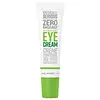What's inside
What's inside
 Key Ingredients
Key Ingredients

 Benefits
Benefits

 Concerns
Concerns

 Ingredients Side-by-side
Ingredients Side-by-side

Retinol
Skin ConditioningWater
Skin ConditioningGlycerin
HumectantSqualane
EmollientDiethylhexyl Carbonate
EmollientHeptyl Undecylenate
EmollientDimethicone
EmollientAmmonium Acryloyldimethyltaurate/Vp Copolymer
Phenoxyethanol
PreservativeTocopheryl Acetate
AntioxidantTetrahydrodiferuloylmethane
AntioxidantCanola Oil
EmollientHesperidin Methyl Chalcone
AntioxidantSodium Hyaluronate
HumectantEthylhexylglycerin
Skin ConditioningSteareth-20
CleansingRetinyl Retinoate
Skin ConditioningSodium Citrate
BufferingPotassium Sorbate
PreservativeDipeptide-2
Skin ConditioningCitric Acid
BufferingPalmitoyl Tetrapeptide-7
Skin ConditioningRetinol, Water, Glycerin, Squalane, Diethylhexyl Carbonate, Heptyl Undecylenate, Dimethicone, Ammonium Acryloyldimethyltaurate/Vp Copolymer, Phenoxyethanol, Tocopheryl Acetate, Tetrahydrodiferuloylmethane, Canola Oil, Hesperidin Methyl Chalcone, Sodium Hyaluronate, Ethylhexylglycerin, Steareth-20, Retinyl Retinoate, Sodium Citrate, Potassium Sorbate, Dipeptide-2, Citric Acid, Palmitoyl Tetrapeptide-7
Water
Skin ConditioningGlycerin
HumectantCetyl Alcohol
EmollientPyrus Malus Fruit Extract
Skin ConditioningAluminum Starch Octenylsuccinate
AbsorbentPropanediol
SolventCaprylic/Capric Triglyceride
MaskingStearyl Alcohol
EmollientPentylene Glycol
Skin ConditioningHydrogenated Olive Oil
Skin ConditioningMaltodextrin
AbsorbentCetearyl Olivate
Cera Alba
EmollientCaffeine
Skin ConditioningSodium Phytate
Olea Europaea Fruit Oil
MaskingAvena Sativa Bran Extract
AbrasiveSorbitan Olivate
EmulsifyingLactobacillus
Skin ConditioningXanthan Gum
EmulsifyingOlea Europaea Oil Unsaponifiables
Skin ConditioningTocopheryl Acetate
AntioxidantCocos Nucifera Fruit Extract
EmollientAspalathus Linearis Leaf Extract
Skin ConditioningLycium Barbarum Fruit Extract
AstringentPunica Granatum Extract
AstringentVitis Vinifera Seed Extract
AntimicrobialCitrus Aurantium Dulcis Peel Extract
Emulsion StabilisingColeus Barbatus Root Extract
Skin ConditioningLeontopodium Alpinum Extract
Skin ConditioningPeucedanum Ostruthium Leaf Extract
Skin ConditioningLeuconostoc/Radish Root Ferment Filtrate
AntimicrobialPinus Cembra Wood Extract
Skin ConditioningCamellia Sinensis Leaf Extract
AntimicrobialPalmitic Acid
EmollientStearic Acid
CleansingSodium PCA
HumectantPhenethyl Alcohol
MaskingSodium Hyaluronate
HumectantWater, Glycerin, Cetyl Alcohol, Pyrus Malus Fruit Extract, Aluminum Starch Octenylsuccinate, Propanediol, Caprylic/Capric Triglyceride, Stearyl Alcohol, Pentylene Glycol, Hydrogenated Olive Oil, Maltodextrin, Cetearyl Olivate, Cera Alba, Caffeine, Sodium Phytate, Olea Europaea Fruit Oil, Avena Sativa Bran Extract, Sorbitan Olivate, Lactobacillus, Xanthan Gum, Olea Europaea Oil Unsaponifiables, Tocopheryl Acetate, Cocos Nucifera Fruit Extract, Aspalathus Linearis Leaf Extract, Lycium Barbarum Fruit Extract, Punica Granatum Extract, Vitis Vinifera Seed Extract, Citrus Aurantium Dulcis Peel Extract, Coleus Barbatus Root Extract, Leontopodium Alpinum Extract, Peucedanum Ostruthium Leaf Extract, Leuconostoc/Radish Root Ferment Filtrate, Pinus Cembra Wood Extract, Camellia Sinensis Leaf Extract, Palmitic Acid, Stearic Acid, Sodium PCA, Phenethyl Alcohol, Sodium Hyaluronate
 Reviews
Reviews

Ingredients Explained
These ingredients are found in both products.
Ingredients higher up in an ingredient list are typically present in a larger amount.
Glycerin is already naturally found in your skin. It helps moisturize and protect your skin.
A study from 2016 found glycerin to be more effective as a humectant than AHAs and hyaluronic acid.
As a humectant, it helps the skin stay hydrated by pulling moisture to your skin. The low molecular weight of glycerin allows it to pull moisture into the deeper layers of your skin.
Hydrated skin improves your skin barrier; Your skin barrier helps protect against irritants and bacteria.
Glycerin has also been found to have antimicrobial and antiviral properties. Due to these properties, glycerin is often used in wound and burn treatments.
In cosmetics, glycerin is usually derived from plants such as soybean or palm. However, it can also be sourced from animals, such as tallow or animal fat.
This ingredient is organic, colorless, odorless, and non-toxic.
Glycerin is the name for this ingredient in American English. British English uses Glycerol/Glycerine.
Learn more about GlycerinSodium Hyaluronate is hyaluronic acid's salt form. It is commonly derived from the sodium salt of hyaluronic acid.
Like hyaluronic acid, it is great at holding water and acts as a humectant. This makes it a great skin hydrating ingredient.
Sodium Hyaluronate is naturally occurring in our bodies and is mostly found in eye fluid and joints.
These are some other common types of Hyaluronic Acid:
Learn more about Sodium HyaluronateTocopheryl Acetate is AKA Vitamin E. It is an antioxidant and protects your skin from free radicals. Free radicals damage the skin by breaking down collagen.
One study found using Tocopheryl Acetate with Vitamin C decreased the number of sunburned cells.
Tocopheryl Acetate is commonly found in both skincare and dietary supplements.
Learn more about Tocopheryl AcetateWater. It's the most common cosmetic ingredient of all. You'll usually see it at the top of ingredient lists, meaning that it makes up the largest part of the product.
So why is it so popular? Water most often acts as a solvent - this means that it helps dissolve other ingredients into the formulation.
You'll also recognize water as that liquid we all need to stay alive. If you see this, drink a glass of water. Stay hydrated!
Learn more about Water